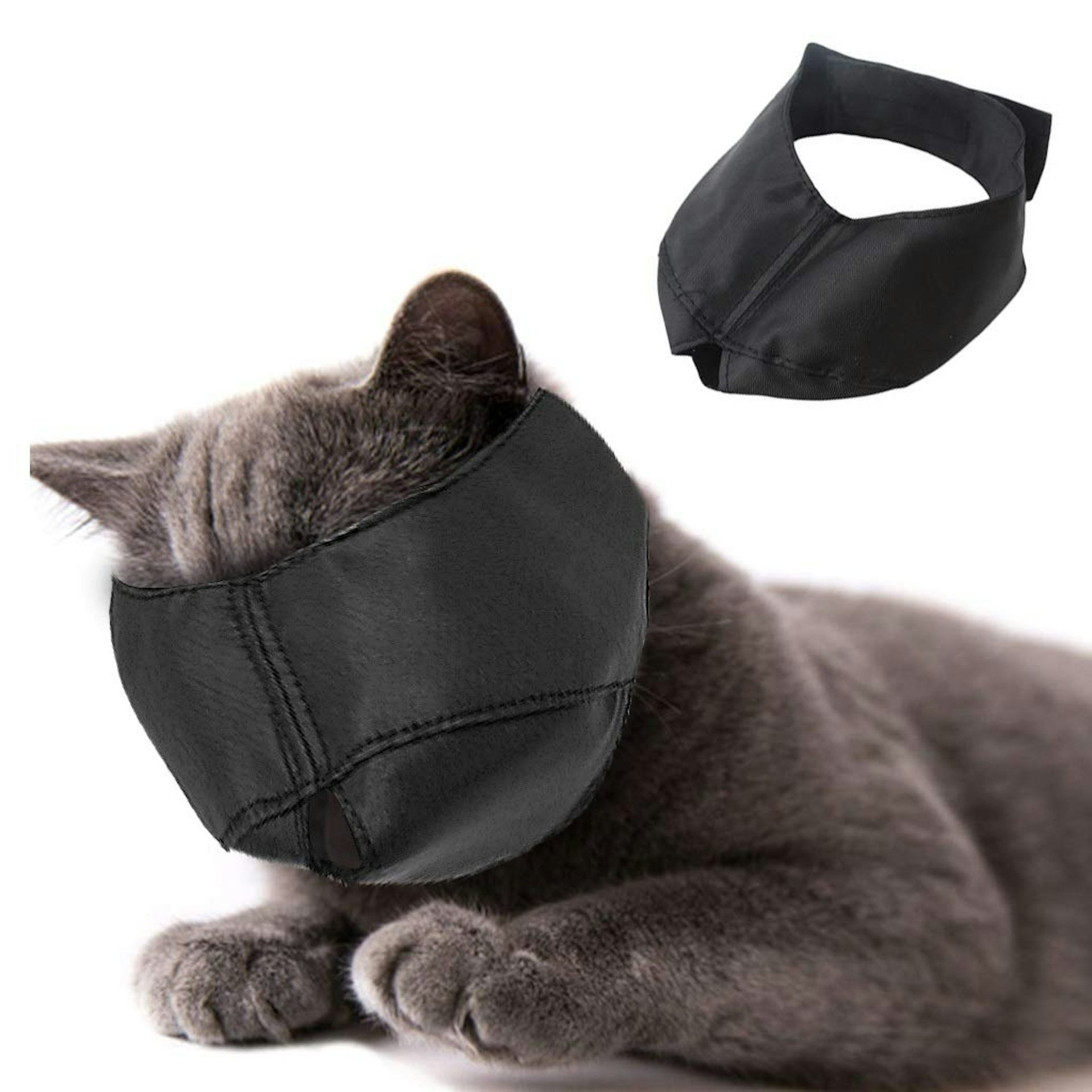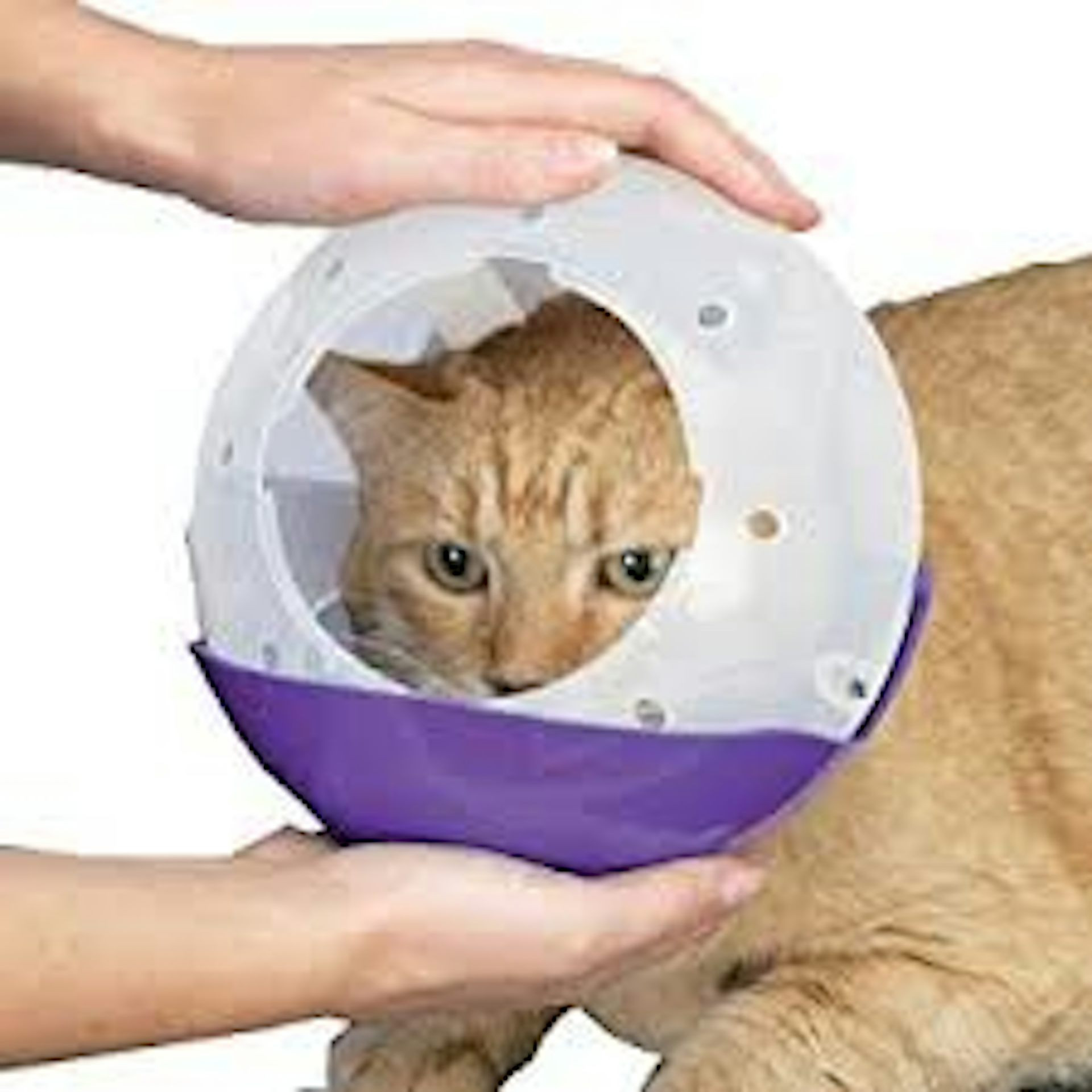It might seem unusual to consider a muzzle for a cat. After all, muzzles are commonly associated with dogs, often used for training or when there’s a risk of biting. However, a quick online search reveals a surprising number of cat muzzles available in various styles and colors. This raises the question: why would a cat need a muzzle, and are they truly a helpful tool for feline care?
Cats are known for their independent nature. While many cats enjoy affection and petting on their own terms, they can quickly become defensive if they feel overly restrained or uncomfortable. Anyone who has attempted to give a cat medication or take them to the veterinarian understands this firsthand. Veterinary visits, in particular, can be highly stressful for cats, often requiring restraint for examination or treatment. In these situations, a cat muzzle might seem like a solution to prevent injury to both the cat and the handler.
However, it’s crucial to understand that not all cat muzzles are created equal. The effectiveness and appropriateness of a muzzle depend heavily on its design and the specific situation. Some muzzles prioritize restraint above all else, potentially causing more stress and harm than good. Consider the muzzle pictured below:
 Stressed cat wearing a poorly designed muzzle with a small breathing hole, highlighting the discomfort and anxiety it causes.
Stressed cat wearing a poorly designed muzzle with a small breathing hole, highlighting the discomfort and anxiety it causes.
This type of muzzle, which completely encloses the cat’s mouth with a minimal breathing hole, is far from ideal. The idea that preventing a cat from biting equates to a less stressed cat is a misconception. While it may temporarily stop a cat from struggling or biting, this is more likely due to fear-induced freezing rather than genuine calmness. A terrified cat may simply become passive, but their internal stress levels are likely very high.
Furthermore, this design poses significant risks. Stressed or frightened cats may resort to mouth breathing. This muzzle severely restricts airflow, and if it shifts even slightly during handling, it could completely block the nostrils, leading to suffocation.
Fortunately, better alternatives exist. The “air muzzle,” as shown below, represents a more humane and effective design for situations where a muzzle is genuinely necessary.
 Cat wearing an air muzzle, a better design that allows for breathing, visibility, and reduces stress during veterinary procedures.
Cat wearing an air muzzle, a better design that allows for breathing, visibility, and reduces stress during veterinary procedures.
This type of muzzle, while appearing bulkier, allows the cat to see, meow, hiss, breathe normally, and even pant if stressed. The open design prioritizes the cat’s well-being while still providing a degree of restraint when absolutely needed.
When is a Cat Muzzle Truly Necessary?
The key question is determining when using a cat muzzle is justified. In emergency situations, particularly when dealing with stray or feral cats unfamiliar with handling, a muzzle can be an unavoidable safety measure for both the cat and rescuers. Even for well-socialized cats, there might be instances during invasive examinations or treatments where a muzzle becomes necessary for brief periods.
However, for routine procedures and general handling, muzzles should not be the first resort. The focus should always be on training and creating positive experiences for your cat.
Positive Reinforcement and Training: A Better Approach
For most domestic cats, especially those raised from kittenhood, proactive training is a far more beneficial and humane approach than relying on muzzles. Early handling and exposure to various stimuli in a gentle and positive manner are crucial for developing a well-adjusted cat.
Consider taking your kitten to the vet clinic for friendly visits, even when no treatment is needed. If the veterinary staff is willing, they can pet and offer treats to your kitten, creating positive associations with the clinic environment. If your current vet practice is not supportive of this approach, it might be worth considering switching to one that encourages proactive and low-stress handling.
Making the cat carrier a comfortable and familiar space is also essential. Feed your cat meals inside the carrier (with the door open initially) and allow them to use it as a bed. These simple steps can significantly reduce travel-related stress and eliminate the need for a muzzle during routine vet visits.
Cats are intelligent and trainable animals. Positive reinforcement training, often known as clicker training, is highly effective for cats. This method uses a distinct sound (the clicker) to mark desired behavior, immediately followed by a reward, such as a treat. This technique has been successfully used to train various animals, from zoo animals to domestic pets, to cooperate with handling and even medical procedures. Cats can even be trained to tolerate nail trims through consistent positive reinforcement. Providing adequate scratching posts and opportunities for natural scratching behavior will also help maintain healthy claws and reduce the need for frequent trimming.
Concerns About Misuse and Responsible Use
One significant concern about cat muzzles is their potential for misuse. Unlike medications or certain veterinary tools, cat muzzles are readily available to anyone. This lack of regulation raises concerns that muzzles could become a default solution for owners struggling with behavioral issues like biting or excessive vocalization (e.g., during heat cycles in unspayed female cats).
It is crucial to remember that a muzzle is a temporary management tool, not a solution to underlying behavioral problems. Using a muzzle to silence a cat or as a long-term fix for aggression is not only inhumane but also ineffective in addressing the root cause of the behavior. Such misuse can lead to significant suffering and worsen the cat’s anxiety and behavioral issues.
Choosing the Right Muzzle (If Necessary)
If a situation genuinely warrants the use of a cat muzzle, prioritize designs that allow for:
- Unrestricted breathing: Ensure the muzzle does not obstruct the nostrils and allows for open-mouth breathing or panting if the cat becomes stressed.
- Visibility: Cats rely heavily on sight. Muzzles that allow for a wide field of vision will be less disorienting and stressful.
- Limited but possible vocalization: Allowing the cat to meow or hiss, even if muffled, enables some level of communication and can reduce frustration.
- Proper fit: The muzzle should be snug enough to stay in place but not so tight that it restricts breathing or causes discomfort. Ensure you can fit a finger comfortably under the straps.
- Short-term use: Muzzles are intended for brief periods during specific procedures, not for prolonged periods.
In Conclusion
Cat muzzles can be a useful tool in very specific and limited situations, primarily for emergency handling or brief veterinary procedures when a cat’s safety or the safety of handlers is at risk. However, they should never be considered a substitute for proper training, socialization, and understanding feline behavior. Prioritizing positive reinforcement methods and creating low-stress environments is always the most humane and effective approach to cat care. If you are considering using a cat muzzle, carefully evaluate the situation, choose a humane design, and consult with your veterinarian or a certified feline behaviorist to explore alternative solutions and ensure you are using it responsibly and ethically.

